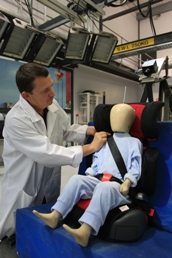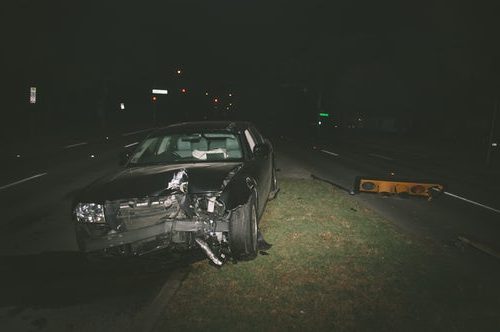WE ARE OFTEN TOLD how new road rules and safety initiatives are responsible for reducing the annual road toll, but just how effective have they really been?
Officials are quick to point to short term drops in fatalities following new legislation supposedly making roads and cars safer. For example, in South Australia (which we used because, surprisingly, it was the state from which we could source the most comprehensive data and correlate it), the road toll dropped from 349 in 1970 to 292 in 1971 when compulsory wearing of seat belts was introduced. However, in the next three years, it climbed again to 382 before beginning a downward trend (339 in 1975, 307 in 1976, 306 in 1977, 291 in 1978, 309 in 1978 and 271 in 1980). So, was the drop a direct result of compulsory seat belt legislation or a random blip?
In 1981, random breath testing was introduced into South Australia and the safety experts trumpeted a substantial fall in the road toll to 222, claiming that this initiative had been responsible for the decrease. However, the very next year, the road toll climbed back to the same level as it had been before RBT (270 in 1982). The toll hovered around the same figure for the next few years, reaching 288 in 1986. If random breath testing was responsible for the fall, the number should have stayed low or shown a slight increase due to drivers becoming more familiar with and less deterred by the new law.
The next year, RBT was doubled and the toll fell once again (256). Red light cameras were the next initiative in 1990 when the SA road toll reached 226. The blood alcohol limit of 0.05 came into force in 1991 and the road toll fell to a new low of 184 and an even lower 165 in 1992. Once again, the powers-that-be boasted how well their new laws were limiting the road carnage, until the toll hit 218 in 1993. It fell again in 1994 to 163. The next change came about in 1995 when laser guns were introduced. There was no discernible change to the road toll that year or the next when laser gun numbers were tripled and RBT doubled (182 fatalities in 1995, 181 in 1996).

However, the initiatives kept on coming. In 1999, advanced speed cameras were introduced. The road toll that year fell to 153, but rose again in 2000 to 166, before dropping back to 153 in 2001 and 154 in 2002. The year 2003 saw three initiatives introduced: mobile random breath testing, dual speed- and red-light cameras and a 50km/h speed limit in built-up areas. The 2003 road toll stayed constant at 156 and fell to 139 in 2004. In 2005, three more strategies were brought in: 24-hour mobile RBT, so-called hoon legislation and immediate loss of licence for drink-drive offenders. A year later, driver drug testing was introduced. The toll for 2005 was 147, falling to another record low of 117 in 2006. For 2007, clamping was added to the hoon laws; the toll rose to 125.
A new record was achieved in 2008 when the road toll fell below 100 for the first time (99 fatalities). This was the same year driver drug testing was expanded state-wide. However, the success was short-lived; the toll rose again to 119 in 2009 and 118 in 2010. Since then, the toll has varied within the realms of statistical variation.

Since 2008, no significant new initiatives have been introduced, although fixed speed cameras have proliferated, every police car carries a radar speed detection device and mobile speed cameras are being deployed more widely. The South Australian road toll continues to hover around 100 (2011: 103; 2012: 94; 2013: 97; 2014: 108, 2015: 102). Authorities started crowing again when the 2016 toll dropped to 86, but in 2017, it was back to 100. The year 2018 saw a new low with the fatality number down to just 80, but already in 2019, 36 drivers have lost their lives (as of 17 April), so SA is on track for another year with 100 or more fatalities.
There are a number of problems with these figures and some risk in using them to extrapolate that various new laws and rules have saved lives. For one thing, the numbers are low and thus subject to natural variation (often called “margin for error”). Authorities usually overcome this by quoting percentages, despite these being highly deceptive on such a small base. Additionally, because the overall numbers are small, they cannot be considered statistically legitimate. Take the past three years as an example: in 2016, 86 people lost their lives on South Australian roads; in 2017, the number was 100, or 16 percent more. In 2018, there were 80 fatal crashes, a decrease of 20 percent. These numbers tell us virtually nothing (apart from a large number of families who have had to endure grief and loss). The only thing that is not in doubt is that increasing enforcement and heavier penalties have hugely inflated the annual government income.
These statistics almost wilfully ignore significant factors such as increased passive and active safety systems in modern cars, improved road design and safety and even the number of vehicles on the road and the number of kilometres travelled per year. What is the percentage of new cars involved in fatal crashes, compared to older vehicles? How many fatalities in older vehicles may have been prevented in more modern vehicles with greater safety features? What effect is the reducing number of kilometres travelled by the average motorist having on the toll? How many more drivers and vehicles are on the road? How much longer are drivers having to spend on the road?
Authorities are quick to claim credit for the falling road toll, blithely ignoring the many other factors that may have had an impact. They use these skewed and misrepresentative statistics to justify higher penalties and lower speed limits without proper interpretation.
There is no argument that our road toll is too high. But there are many factors that contribute to it and they should all be taken into consideration.
In the meantime, any fall in the road toll will be down to the clever decisions made by those in authority while any increase will be blamed squarely on the irresponsibility and recalcitrance of motorists.
